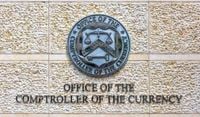In a landmark decision for the U.S. banking sector, Capital One's $35 billion acquisition of Discover Financial Services has received approval from key regulators, paving the way for the formation of the largest credit card company in the United States. The Federal Reserve Board of Governors and the Office of the Comptroller of the Currency (OCC) announced their endorsement of the merger on Friday, April 18, 2025, contingent upon the companies meeting certain final conditions.
"Based on the foregoing and all the facts of record, the Board determines that the proposal should be, and hereby is, approved," stated Anne Misback, Secretary of the Federal Reserve System Board of Governors, in the agency's order. The OCC echoed this sentiment, confirming that the merger aligns with their statutory approval rules.
The regulators conducted a thorough review, concluding that the merger would not significantly lessen competition, jeopardize community needs, or increase risks to the banking and wider financial system. The OCC's statement emphasized that the merger complies with the Bank Merger Act's stipulations.
However, the Federal Reserve's approval was accompanied by a consent order and a hefty $100 million fine levied against Discover for overcharging customers on certain interchange fees from 2007 to 2023. The Fed reported that Discover has since ceased these practices and is in the process of repaying affected customers.
The OCC's approval came with specific conditions, requiring Capital One to submit a plan addressing the underlying causes of any ongoing enforcement actions against Discover Bank, as well as a strategy for remediation of any harm caused. This regulatory nod follows previous approvals from the Delaware State Bank Commissioner in December 2024 and from shareholders of both companies in February 2025.
The merger is expected to create a financial powerhouse, with the combined entity projected to have consolidated assets of approximately $637.8 billion, making it the eighth largest bank in the country, according to the Federal Reserve. This acquisition positions Capital One as the leading credit card issuer in the U.S. by loan volume, surpassing even industry giant JPMorgan Chase.
Capital One is widely recognized for its impactful advertising campaigns, famously asking consumers, "What’s in your wallet?" This merger not only enhances Capital One's market position but also signifies a significant shift in the competitive landscape of the banking industry.
The approval of this merger comes on the heels of recent developments within the Justice Department, where reports indicated that the new antitrust leader, Gail Slater, found insufficient evidence to challenge the acquisition in court. This finding has been viewed as a critical factor in the regulators’ decision.
Rodney Hood, the acting comptroller of the OCC, remarked on the importance of the merger, stating, "Our agency is committed to a regulatory framework that expands access to financial services for consumers, businesses, and communities." This sentiment reflects a broader goal of ensuring that the merger not only benefits the companies involved but also serves the public interest.
As the banking sector continues to evolve, this merger could set a precedent for future consolidations in the industry. With the combined resources of Capital One and Discover, the new entity is poised to innovate and expand its offerings, potentially reshaping consumer experiences in the credit card market.
In summary, the recent approvals from the Federal Reserve and OCC mark a significant milestone in the banking world, allowing Capital One to proceed with its acquisition of Discover. As the largest merger in the banking space in at least six years, it underscores the ongoing trend of consolidation within the industry, driven by the need for greater efficiency and competitive advantage.







